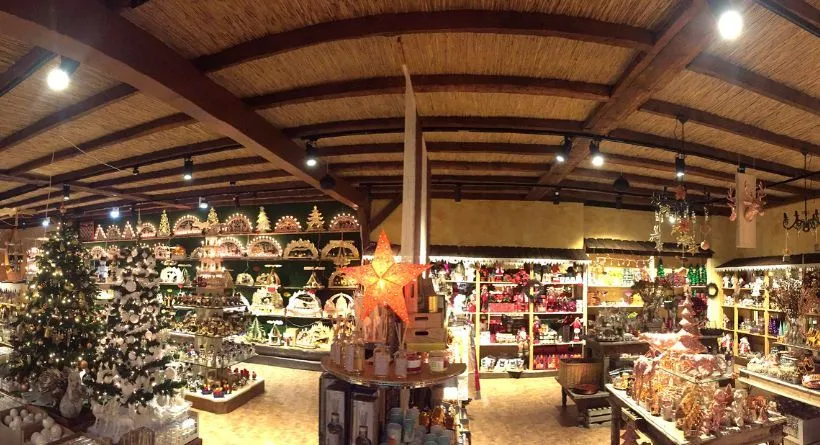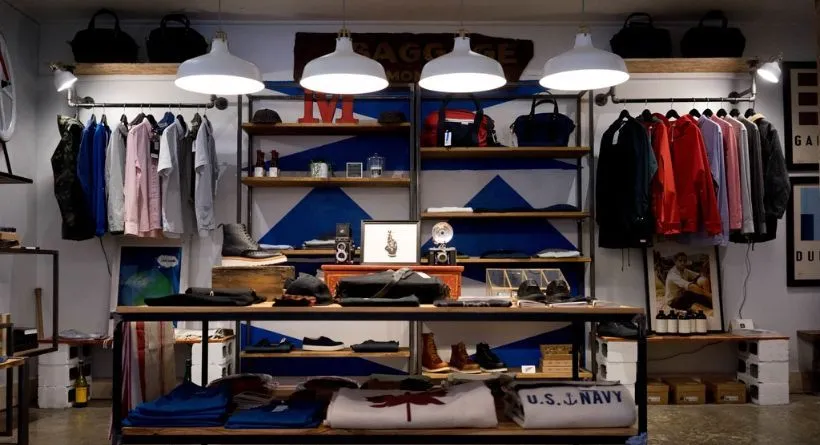Are you struggling to create the perfect atmosphere for your retail space and maximize customer engagement? You’re not alone. Many business owners face challenges when it comes to selecting and designing the ideal retail lighting scheme. Accepting that there is a problem is the first step toward finding a solution. In this comprehensive blog post, we promise to provide you with a 5-step process to help you choose and design the most effective retail lighting for your store.
Also Read: How to Start a Cleaning Business: A Guide in 6 Simple Steps
By giving you an overview of various lighting techniques, strategies, and technologies, we will prove that our solution can help you overcome the challenges associated with retail lighting. In today’s competitive market, addressing the pain points of poor lighting design can make a significant difference in your business’s success. From attracting customers to making your products stand out, we’ll help you create an inviting and visually appealing space. So, let’s dive into the world of retail lighting and discover how to illuminate your store’s potential.
The Importance of Retail Lighting in Your Business

Attracting Customers
Retail lighting plays a crucial role in drawing customers to your store. A well-lit storefront is inviting and encourages potential buyers to explore your offerings. By using strategically placed lights, you can showcase your products and make your store stand out among competitors. Remember, first impressions are important, and attractive retail lighting can make all the difference.
Also Read: The 7 Best Business Cell Phone Plans of 2023
Enhancing Customer Experience
Once inside, the right retail lighting creates a pleasant shopping environment. It helps customers navigate your store with ease, find products they’re looking for, and make informed purchasing decisions. Moreover, proper lighting can highlight specific areas, making it simpler for shoppers to locate promotions, new arrivals, or sale items.
Increasing Sales
When done correctly, retail lighting can significantly impact your sales. By emphasizing particular products or creating a warm, welcoming atmosphere, customers are more likely to make purchases. Good lighting design can also encourage impulse buys by drawing attention to strategically placed items.
Retail Lighting and Brand Identity
Retail lighting is a powerful tool to reinforce your brand identity. A unique lighting design can distinguish your store from competitors, create a memorable shopping experience, and communicate your brand’s values. For example, a sustainable brand might opt for energy-efficient LED lighting, while a luxury retailer may choose elegant chandeliers to create an opulent atmosphere.
Types of Retail Lighting
Ambient Lighting
Ambient lighting is the primary source of light in your store, providing general illumination for a comfortable shopping experience. It establishes the overall mood and sets the foundation for other lighting types.
Task Lighting
Task lighting is focused on specific areas that require more illumination, like fitting rooms or checkout counters. It helps customers and employees perform necessary tasks efficiently and safely.
Accent Lighting
Accent lighting is used to highlight specific products, displays, or architectural features. By drawing attention to key areas, you can showcase high-value items or promote new arrivals, ultimately increasing sales.
Decorative Lighting
Decorative lighting adds visual interest and enhances your store’s atmosphere. While it may not directly impact product visibility, it contributes to creating a memorable shopping experience that aligns with your brand identity.
Choosing the Right Combination for Your Store
Selecting the perfect mix of retail lighting types depends on your store’s layout, product offerings, and brand identity. Consider the function and aesthetics of each lighting type to create a harmonious and effective design.
How to Select the Best Retail Lighting Solution

Analyzing Your Space and Layout
Before choosing a retail lighting solution, evaluate your store’s layout, size, and architectural features. Assess the ceiling height, window placement, and natural light available to determine the most suitable lighting options.
Also Read: Real Estate Broker vs Agent: What’s The Difference?
Identifying Focus Areas and Display Zones
Identify the key areas in your store that need additional lighting, such as product displays, promotional zones, or high-traffic areas. Use accent or task lighting to emphasize these spaces and draw customers’ attention.
Choosing the Right Color Temperature
Color temperature plays a significant role in setting the mood of your store. Warmer color temperatures create a cozy atmosphere, while cooler temperatures promote a modern, clean look. Select the color temperature that best aligns with your brand identity and desired shopping experience.
Considering Energy Efficiency and Maintenance
Opt for energy-efficient lighting solutions, like LEDs, to reduce operating costs and minimize environmental impact. Additionally, consider the maintenance requirements of your chosen lighting system to ensure it remains functional and visually appealing.
Selecting the Right Type of Light Fixture
Choose light fixtures that complement your store’s design and efficiently distribute light. From recessed lighting and track lights to pendant fixtures and chandeliers, select fixtures that align with your brand’s aesthetic and serve the intended purpose.
In conclusion, retail lighting is essential for attracting customers, enhancing their shopping experience, increasing sales, and establishing brand identity. By carefully considering the different
Designing Your Retail Lighting Plan in 5 Steps
Step 1: Analyze Your Space and Layout
Begin by assessing your store’s layout, size, and architectural features. Take note of existing natural light, ceiling height, and window placement. This initial analysis will help you make informed decisions about your retail lighting plan.
Step 2: Develop a Lighting Concept
Create a lighting concept that complements your brand identity and enhances the shopping experience. Consider how different lighting types can work together to highlight products, create a comfortable atmosphere, and guide customers through your store.
Step 3: Choose the Right Lighting Fixtures
Select light fixtures that suit your store’s design and distribute light effectively. From recessed lighting to pendant fixtures, choose options that align with your brand’s aesthetic and serve their intended purpose.
Step 4: Plan the Installation Process
With your lighting concept and fixtures in hand, plan the installation process. Consider hiring a professional to ensure proper placement, wiring, and adherence to safety regulations.
Step 5: Evaluate the Results and Adjust as Needed
After installation, assess the effectiveness of your retail lighting. Make adjustments as necessary to optimize the design and ensure it meets your goals.
Tips and Best Practices for Effective Retail Lighting
Layering Lights
Layering lights involves using multiple lighting types to create depth and visual interest. Combine ambient, task, accent, and decorative lighting for a well-rounded retail lighting plan.
Incorporating Natural Light
Natural light is an invaluable resource. Utilize windows and skylights to create a bright, inviting atmosphere. Consider how natural light changes throughout the day and adjust your lighting plan accordingly.
Adapting to Seasonal Changes
Seasonal changes can impact your retail lighting needs. Adjust your lighting design to accommodate holidays, seasonal product displays, or changes in daylight hours.
Utilizing Smart Lighting Controls
Smart lighting controls, such as dimmers and timers, provide flexibility and energy efficiency. These controls allow you to customize your lighting based on customer flow, time of day, or specific events.
Conclusion:
In today’s competitive retail industry, creating a visually appealing and customer-friendly atmosphere is crucial for the success of your business. As we have discussed, retail lighting plays a significant role in attracting customers, enhancing their experience, and ultimately increasing your sales. It also contributes to your brand identity, making your store memorable and recognizable.
By understanding the different types of retail lighting and following the five-step process of designing an effective retail lighting plan, you can transform your store into a welcoming and engaging space. Implementing tips and best practices like layering lights, incorporating natural light, adapting to seasonal changes, and utilizing smart lighting controls will help you create a dynamic and versatile lighting environment that will keep your customers coming back.
Incorporating effective retail lighting is an investment in your business that can pay dividends in customer satisfaction and loyalty. By prioritizing lighting in your store, you can set yourself apart from the competition and create a shopping experience that is both memorable and profitable.
FAQs:
Is retail lighting just about making the store look good?
How can I choose the right type of light fixture for my store?
Can I incorporate natural light into my retail lighting plan?
How to design lighting for a shop?
a. Understand your objectives: Determine the primary purpose of your lighting – whether it’s for ambiance, task lighting, or accent lighting. This will help you decide on the most suitable types of lights and their placement within the store.
b. Analyze your store layout: Assess the store’s layout and allocate different lighting zones based on their function, such as product display areas, checkout counters, and dressing rooms.
c. Choose the right type of lighting: Select the appropriate lighting fixtures for each zone, considering factors such as color temperature, intensity, and beam angle.
d. Optimize placement: Place lighting fixtures strategically to highlight products, create depth, and avoid shadows or glare.
e. Consider energy efficiency: Incorporate energy-efficient lighting solutions such as LED lights to reduce energy consumption and operational costs.
How do you design good lighting?
a. Layer your lighting: Combine ambient, task, and accent lighting to create a balanced and dynamic lighting design.
b. Prioritize flexibility: Use adjustable fixtures that can be easily repositioned or dimmed to accommodate changing displays or store layouts.
c. Control color temperature: Ensure consistency in color temperature throughout the store to create a cohesive and pleasant shopping environment.
d. Pay attention to color rendering: Choose lighting with a high color rendering index (CRI) to ensure that the colors of your products are accurately represented.
e. Incorporate natural light: Utilize natural light whenever possible, as it can create a more inviting atmosphere and help reduce energy costs.

